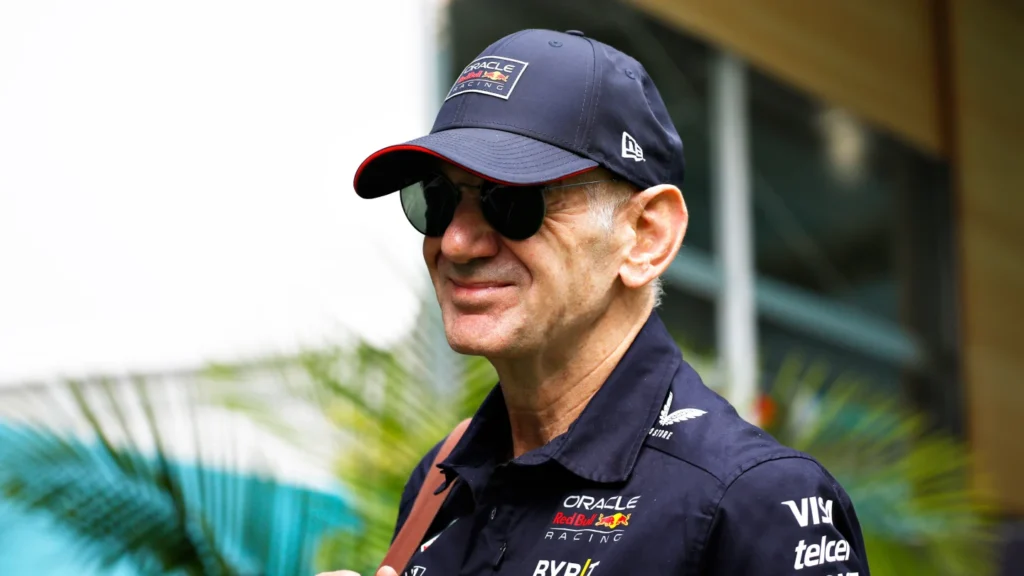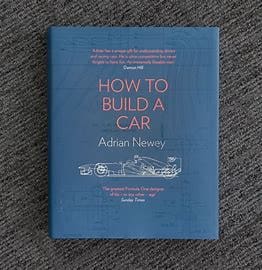An Early March to success: the baby steps of Adrian Newey’s F1 career
By Jack Oliver Smith

Adrian Newey is perhaps one of the most transcendent figures in the history of Formula 1. At 65 years of age, he still uses a drawing board and a pencil to design cars that go faster than any other and has been omnipresent within every era of the sport since the late 1980s.
His name was first really recognised back in 1988, when he joined the moribund March team. Newey had previously cut his teeth as an aerodynamicist with Carl Haas’ joint-project with Lola in 1986, later spending some time as a race engineer for Mario Andretti in IndyCar, but March gave him his first big break as a chief designer, and his first car – the 881 – was a pretty decent debut.
1988 was the final year of Formula 1’s 11-year-long turbo era, and was dominated by the McLaren-Hondas of Alain Prost and Ayrton Senna, who took his first Drivers’ title. All but one of the races that season were won by a McLaren. But further back on the grid, Newey’s car was making waves of its own.
In class, the 881 was one of fastest non-turbos across the whole season. Featuring a unique aerodynamical look as well as one of Newey’s early trademarks – the slim-fitting monocoque – the car was driven by Ivan Capelli and Mauricio Gugelmin. It would finish the year as the second-highest-scoring non-turbo, scoring 22 points, just one behind the turbo-powered Arrows and Lotus teams. Capelli scored two podium finishes and became the first non-turbo car in half-a-decade to lead a Grand Prix, when he briefly overtook Prost for the lead in Japan.
A blot on Newey’s copybook was the next season’s car, CG891, which failed to score a single point all year, but 1989 did start with Gugelmin scoring a podium at his home race in Brazil, driving the ’88 challenger.
1990 solidified Newey’s reputation as a new star of F1 design. Now running as Leyton House Racing, Newey was promoted to the role of technical director, but was ultimately held-back by financial difficulties within the team, which led to the team’s demise at the end of 1991. However, the team’s last hurrah would come courtesy of the car Newey designed, the CG901.
At the French Grand Prix at Paul Ricard, Capelli and Gugelmin only qualified seventh and 10th respectively, but with the long straights and sweeping high-gear turns suiting its aero package, and with the tactical gamble of not choosing to pit for tyres when others did, Capelli was able to lead for much of the race, with Gugelmin following close behind.
However, the team would be prevented from taking a brilliant win, with the car’s engine proving its downfall. Gugelmin would retire with 22 laps left, with Capelli required to manage his own ailing engine, allowing Prost’s Ferrari to take the lead with just three laps left.
The achievement would not be diminished in any way, and the result would prove to be a watershed moment in Newey’s career. With the team’s finances dwindling, Newey would join Williams for 1991, and go on to form a technical partnership with Patrick Head that yielded four Drivers’ Championships and five Constructors’ Championships.
-30-

Thoughts Racing welcomes respected U.K.-based writer Jack Oliver Smith, who will contribute his insight about classic Formula 1 history. An FIA-accredited motorsports journalist with vast experience, Jack is Formula E Editor for Motorsport Week and contributes opinion and historic pieces for LastWordOnSports.com.
#AdrianNewey #Formula1 #JackOliverSmith #HowToBuildACar
